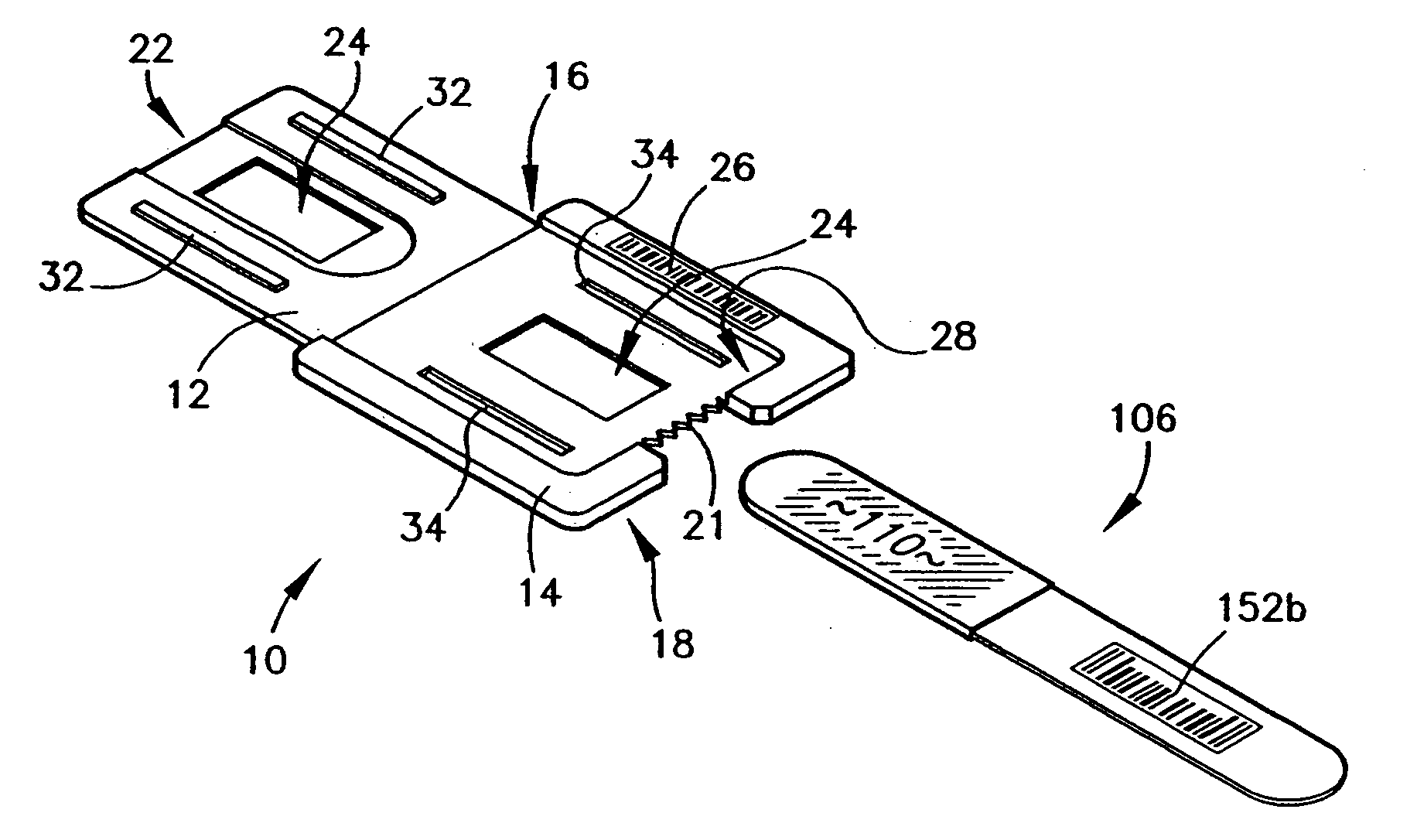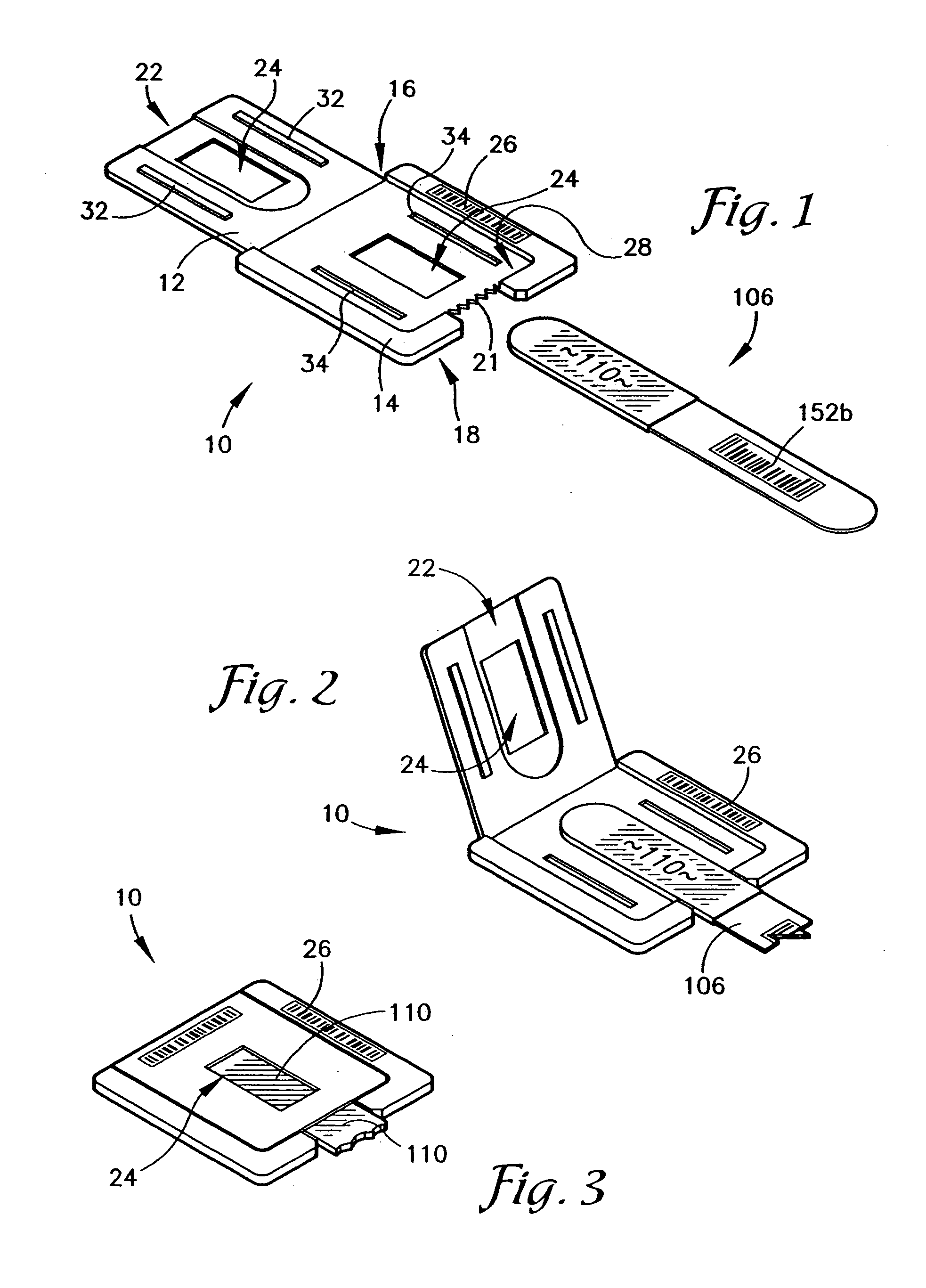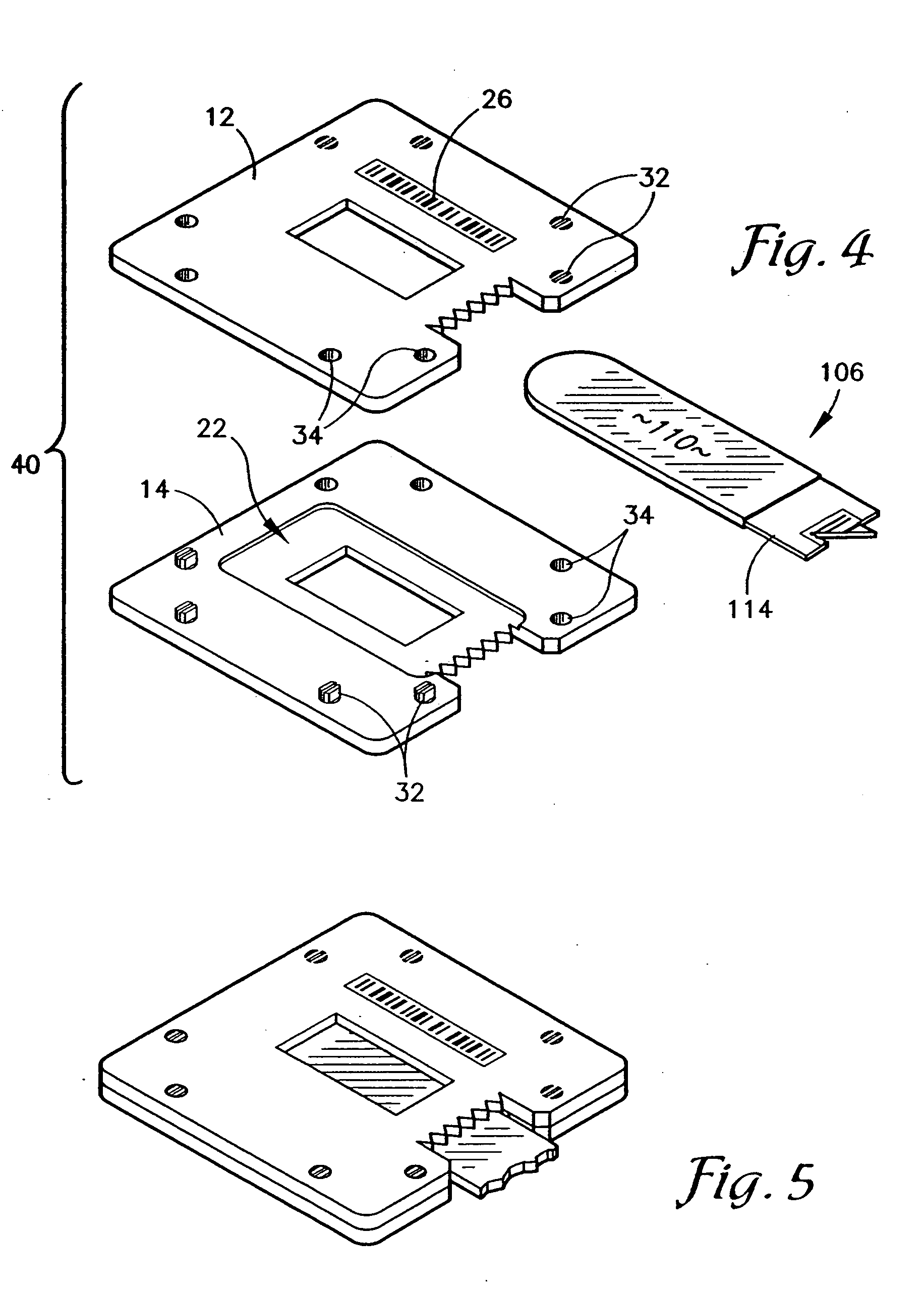Evidence collection holder for sample automation
a technology for storing and collecting samples, applied in the field of storing samples for sample automation, can solve the problems of inability to properly collect samples, lack of visual characteristics, and inability to cooperate with people,
- Summary
- Abstract
- Description
- Claims
- Application Information
AI Technical Summary
Benefits of technology
Problems solved by technology
Method used
Image
Examples
embodiment 10
[0052] Referring now to FIGS. 1-3, a sample carriage device embodiment 10 is shown which allows the paper absorbent 110 of the specimen / sample collector 106 to be inserted into the carriage device 10 and the paper absorbent 110 captured within the carriage device and the paper separated from the collector handle 114 (FIG. 10) by serrated edges 21 on device 10.
[0053] Referring to FIG. 1, embodiment 10 is comprised of an upper portion 12 that is connected to a bottom portion 14 by the use of a hinge means or staple connection or fold along back edge 16 to permit top portion 12 to be separable from bottom portion 14 along front edge 18. Front edge 18 includes cutter portion 21 having teeth-like edges or serrations in front edge 18 the purpose of which shall be described hereinafter.
[0054] In operation, a specimen or sample collector 106 such as the one shown in FIGS. 8-10 can be used with any of the embodiments of FIGS. 1-7. Other configurations or shapes of absorbents 110 may be used...
embodiment 50
[0061] In operation, the function of the embodiment 50 of FIGS. 6 & 7 is as follows: A handle sample holder 106 having a bar code 152b and having a collection absorbent or paper 110 attached thereto such as the collection device 106 of FIGS. 8-10 of the present application is inserted into bottom portion or half 14 of device 50. As is shown in FIG. 6, windows 52a, b and 54a, b are included on both top portion 12 and bottom portion 14 of holder 50. A support band 56 bridges windows 52a, b and 54a, b. Support band 56 supports device 106 within the holder 50 while allowing the bar code 152b on device 106 to be viewed and read with a bar code scanner and sample collection portion 110 of device 106 to be exposed and accessible and viewable at all times.
[0062] It will be appreciated that during manufacture, bottom portion 12 and top portion 14 of device 50 can be constructed so the top and bottom portions are identical. Thus, the individual inserting device 106 into the halves of the devi...
embodiment 100
[0070] In FIG. 15, the reverse side of embodiment 100 is shown, including the reverse side 190 of information portion 175 and the reverse side 200 of holder portion 150. On the reverse side of the information portion, areas for marking the date the card 100 was received at various locations 194 is provided, a space for a department of justice specimen number 164, identification and signature of the collecting agent 196, the name and signature of the subject 198, and space for a second fingerprint 192. The second fingerprint can further serve as a correlating marking proving that the individual whose biological sample and / or finger print appeared in holder 150 also was available to provide the finger or thumb print which was placed on the reverse side 190 of information portion 175.
[0071] Referring now to FIGS. 16 and 17 alternative embodiments 200, 200a are presented. In the embodiment of FIG. 16, a perforation line 158 is shown in the location described in the discussion of the emb...
PUM
| Property | Measurement | Unit |
|---|---|---|
| adhesive | aaaaa | aaaaa |
| area | aaaaa | aaaaa |
| size | aaaaa | aaaaa |
Abstract
Description
Claims
Application Information
 Login to View More
Login to View More - R&D
- Intellectual Property
- Life Sciences
- Materials
- Tech Scout
- Unparalleled Data Quality
- Higher Quality Content
- 60% Fewer Hallucinations
Browse by: Latest US Patents, China's latest patents, Technical Efficacy Thesaurus, Application Domain, Technology Topic, Popular Technical Reports.
© 2025 PatSnap. All rights reserved.Legal|Privacy policy|Modern Slavery Act Transparency Statement|Sitemap|About US| Contact US: help@patsnap.com



